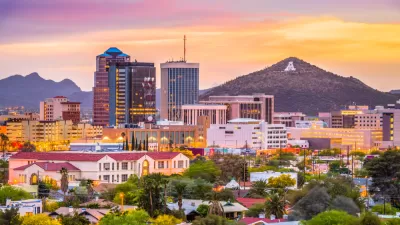New technology is allowing massive investment in oil drilling in North and South America, from Canada to Argentina. This article centers on the investment in the region's two largest economies, U.S. and Brazil, and its effect on energy geopolitics.
Colombia has joined the ranks of major oil exporters; there have been major discoveries in Argentina, and Chinese rigs are drilling in Cuba's waters. As the hemisphere produces more of its own oil, there is less reliance on the Mideastern supplies. The U.S. has reduced OPEC imports by over a million barrels a day since 2007.
"The hemisphere's oil boom is all the more remarkable given that two of its traditional energy powerhouses, Venezuela (considered to have larger oil reserves than Saudi Arabia) and Mexico, have largely been left out, held in check by entrenched resource nationalism.
The challenges of tapping Brazil's new offshore fields, located beneath 6,000 feet of water and salt beds formed by the evaporation of ancient oceans, are even greater (than those in North Dakota and Texas). Petrobras, which has ambitions of surpassing ExxonMobil as the world's largest publicly traded oil company, is investing more than $200 billion to meet its goals."
"To some degree, we're going to see a new rebalancing, with the Western Hemisphere moving back to self-sufficiency", said Daniel Yergin, an American oil historian. (See NYT book review of his latest book, The Quest).
Thanks to Mark Boshnack
FULL STORY: New Fields May Propel Americas to Top of Oil Companies’ Lists

Maui's Vacation Rental Debate Turns Ugly
Verbal attacks, misinformation campaigns and fistfights plague a high-stakes debate to convert thousands of vacation rentals into long-term housing.

Planetizen Federal Action Tracker
A weekly monitor of how Trump’s orders and actions are impacting planners and planning in America.

San Francisco Suspends Traffic Calming Amidst Record Deaths
Citing “a challenging fiscal landscape,” the city will cease the program on the heels of 42 traffic deaths, including 24 pedestrians.

Defunct Pittsburgh Power Plant to Become Residential Tower
A decommissioned steam heat plant will be redeveloped into almost 100 affordable housing units.

Trump Prompts Restructuring of Transportation Research Board in “Unprecedented Overreach”
The TRB has eliminated more than half of its committees including those focused on climate, equity, and cities.

Amtrak Rolls Out New Orleans to Alabama “Mardi Gras” Train
The new service will operate morning and evening departures between Mobile and New Orleans.
Urban Design for Planners 1: Software Tools
This six-course series explores essential urban design concepts using open source software and equips planners with the tools they need to participate fully in the urban design process.
Planning for Universal Design
Learn the tools for implementing Universal Design in planning regulations.
Heyer Gruel & Associates PA
JM Goldson LLC
Custer County Colorado
City of Camden Redevelopment Agency
City of Astoria
Transportation Research & Education Center (TREC) at Portland State University
Jefferson Parish Government
Camden Redevelopment Agency
City of Claremont




























